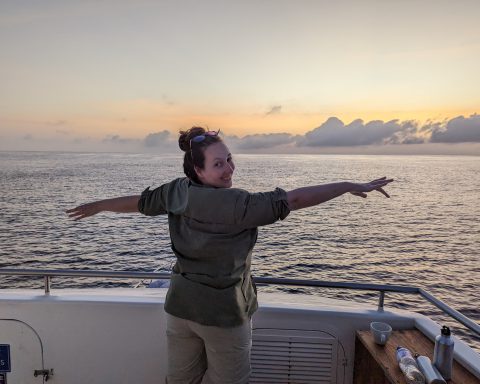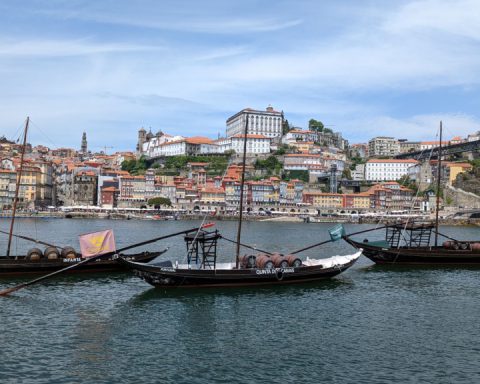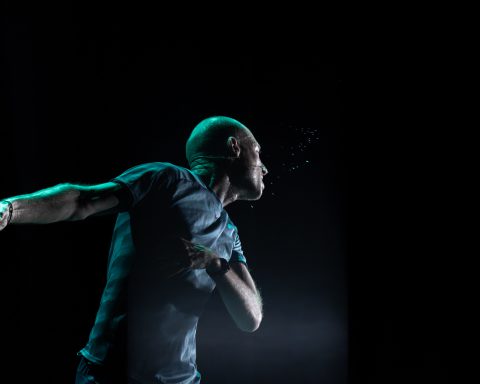A lot of Leipzig’s underground charm is owed to the city’s grungy appeal. There are unconcealed wallflowers at the edges of the city that give exposure to counterculture events at non-industrial locations. To rephrase it in a musical analogy: It’s nice enough to enjoy Mozart’s serenades, but sometimes you just want some Cymbals Eat Guitars.
One of these locations is a place called Helmut right in the heart of Neuschönefeld. Take its sparse hipster ambience as a sign of unassuming down-to-earthness, completely matched by the composed and convivial girls behind the counter. There are no official opening hours and no menu – you just ask them what they have and they ask you what it’s worth to you. Quite wonderful, that.
Helmut recently hosted an exhibition by Keren Shalev, an artist from Israel.

During a 3-week exhibition of drawings and a sculpture of a broken currach – an Irish boat that usually has a wooden frame but was made of metal here – Keren gave an insight into her current artistic state of mind and an expressionistic outlet of what a winter in Ireland can feel like. Maybe Jack Butler Yates had a similar thing in mind whan he painted this currach about a hundred years ago.
When images draw on truth, the Abyss gains meaning.
The exhibition focused on her experience of travelling Ireland in adverse winter weather, with her work reflecting on the mass of the exterior space. What may sound like a very heavy-handed depiction with a deep philosophical dimension is actually quite simple: the artist feels the space between herself and the outer world through the eye of her mind. Her drawings are a fragmented echo of the world around her; a rather brutal, dim, melancholic world at that.
“Expressive scattered lines gathered into recognizable structures. Drawing in space. Wrecked boat left laying on its side. Uprooted object. Relic. Loss of value. A melancholic vision. Phenomenon of ferociousness, of fragility.” Keren Shalev

Keren didn’t feel a meaningful connection to Ireland before she went there, so her journey was marked by a random approach of trying to experience what “the outside mass” offered to her without wanting to seek the ultimate Ireland experience. This mantra worked well for her as she felt completely immersed with her surroundings immediately, which soon lead to a 10 day stay at the Atlantic coast in County Clare. Here she gained ample exposure to elements and forces of nature.
For Keren, lost is a nice place to be at.
“It doesn’t carry the notion of feeling lost or getting lost, or even being lost. Rather than looking for something you can take a selfie picture of and then forget about the moment when you stash the camera away, Lost is a helpful place to discover the world as it presents itself to you. It helps you see the changes as they occur and lets you experience the presence of things that don’t change.” Quite a great way of probing your own consciousness, we shall think.
Tin whistle loops and harmonica feedback

At the finissage, the American musician Patrick Flanagan performed his own experimental music on several instruments in tune with the melancholy of Keren Shalev’s Boat Wreck. He played an Irish flute, harmonica, acoustic guitar and drummed a beat on the latter. All this was sampled and looped with guitar pedals and sent to two speakers at the opposing ends of the exhibition room through a MIDI sequencer. This spectacle of Irish music of a different kind was the perfect company for an evening with Keren’s work that we shall hope to see continued in the not too distant future.
Helmut has a high quality exhibition program with exhibitions changing monthly.







![Wine & Paint event on 9 Nov. 2024 at Felix Restaurant, Leipzig. Photo: Florian Reime (@reime.visuals] / Wine & Paint Leipzig](https://leipglo.com/wp-content/uploads/2024/12/pixelcut-export-e1733056018933-480x384.jpeg)


